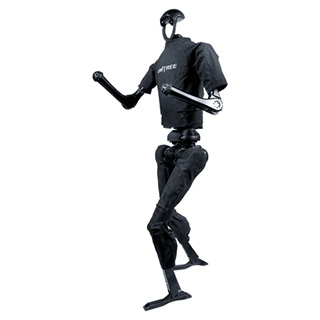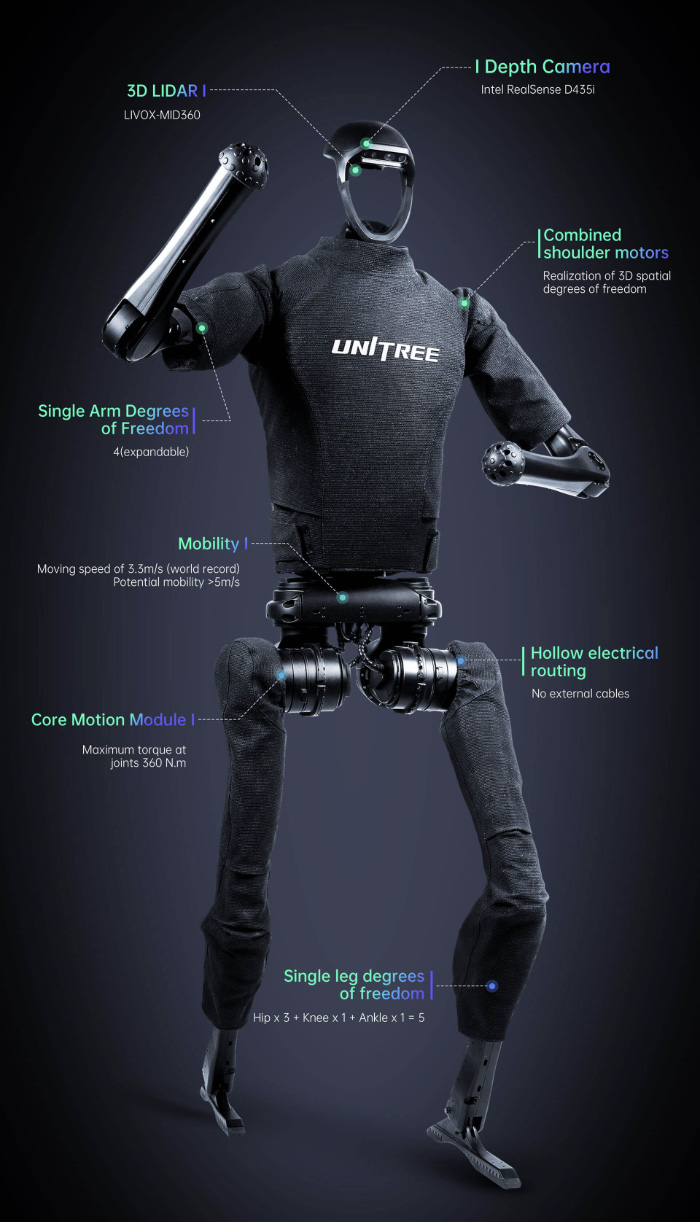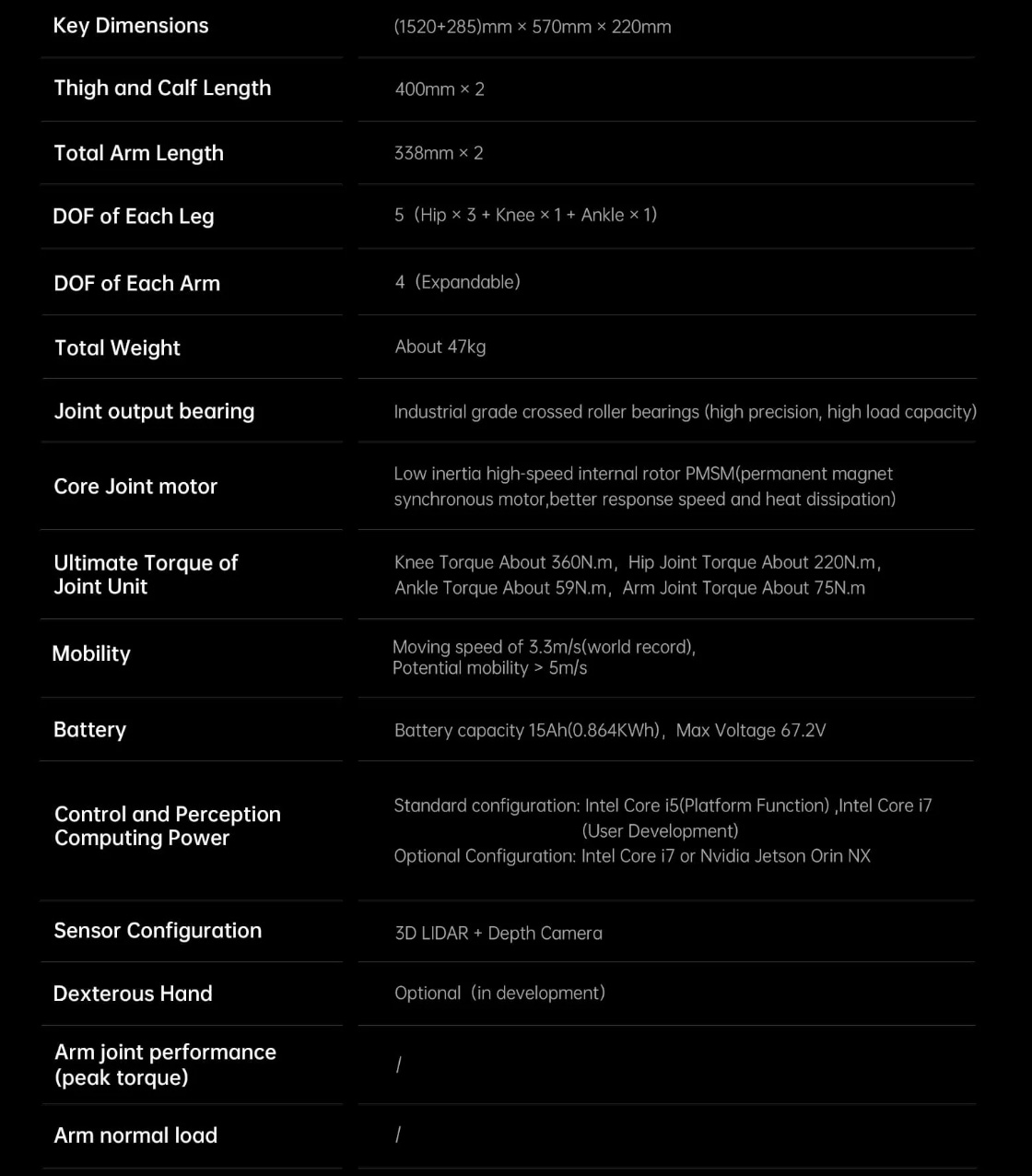Humanoid Robots - Unitree H1
The Unitree H1 is latest humanoid robot developed by Unitree Robotics, designed to showcase advanced robotics technology with a focus on mobility, human-like interaction, and AI-driven capabilities. Positioned as a more advanced model compared to its predecessor, the H1 expand its utility for both research and practical applications.
Design and Build
The H1 is designed with lightweight materials, standing at approximately 1.8 meters tall and weighing around 47 kilograms. Its compact and robust structure ensures agility while maintaining durability. The robot features a modular design, allowing for easy upgrades and customization to meet specific needs13.
Degrees of Freedom (DOF): The H1 boasts 19 degrees of freedom, with 10 in the legs, 1 in the torso, and 8 in the arms. This enables highly flexible and human-like movements36.
Joint Torque: Equipped with high-torque motors, the H1 achieves a peak torque of 360 N·m in the knees, 220 N·m in the hips, and 75 N·m in the arms, making it one of the most powerful humanoid robots in its class.
Mobility and Agility
The H1 is renowned for its exceptional mobility, capable of walking, running, and even performing dynamic maneuvers like backflips and high jumps. It holds the world record for the fastest speed of a full-sized humanoid robot, reaching 3.3 m/s, with a potential speed exceeding 5 m/s.
Terrain Adaptability: The robot can navigate complex terrains, including stairs and uneven surfaces, thanks to its advanced locomotion system and real-time environmental perception13.
Dynamic Movements: The H1 has demonstrated impressive feats such as backflips, showcasing its ability to handle high-dynamic tasks with precision and stability.Sensing and Perception
The H1 is equipped with a suite of advanced sensors, enabling it to perceive and interact with its environment intelligently.
3D LiDAR and Depth Cameras: These sensors provide 360-degree depth perception, allowing the robot to map its surroundings in real time and avoid obstacles.
AI Integration: The H1 leverages AI algorithms for tasks such as object recognition, navigation, and human interaction. It can also learn new skills through reinforcement learning and simulation-based trainin1.
Performance and Applications
The H1 is designed for a wide range of applications, making it a versatile tool for both research and practical use.
Industrial Use: The robot can assist in manufacturing, logistics, and inspection tasks, performing repetitive or hazardous work with precision312.
Service and Hospitality: With its ability to interact naturally with humans, the H1 is well-suited for roles in customer service, retail, and hospitality211.
Research and Development: The H1 serves as an open-source platform for robotics research, enabling developers to explore new algorithms and applications612.Key Features
Battery and Endurance: The H1 is powered by a 15Ah battery (864Wh) with a maximum voltage of 67.2V, providing up to 1 hour of continuous operation.
Computing Power: It features an Intel Core i5 or i7 processor, with optional upgrades to Nvidia Jetson Orin NX for enhanced AI capabilities.
Dexterous Hands: The H1 can be equipped with optional dexterous hands for tasks requiring fine motor skills, such as grasping and manipulating objects.User Interaction and Control
App-Based Control: The H1 can be controlled via a mobile application that allows users to send commands, control movements, or program autonomous behavior. The app provides real-time feedback on the robot's status and environment.
Voice and Gesture Control: The robot can understand and respond to voice commands in several languages, allowing users to direct it to perform tasks or navigate specific environments. Gesture control is also supported for more intuitive interaction.
Customization: Developers can use the provided SDK (Software Development Kit) to customize the robot's behavior, create new functionalities, or integrate it with other systems.


